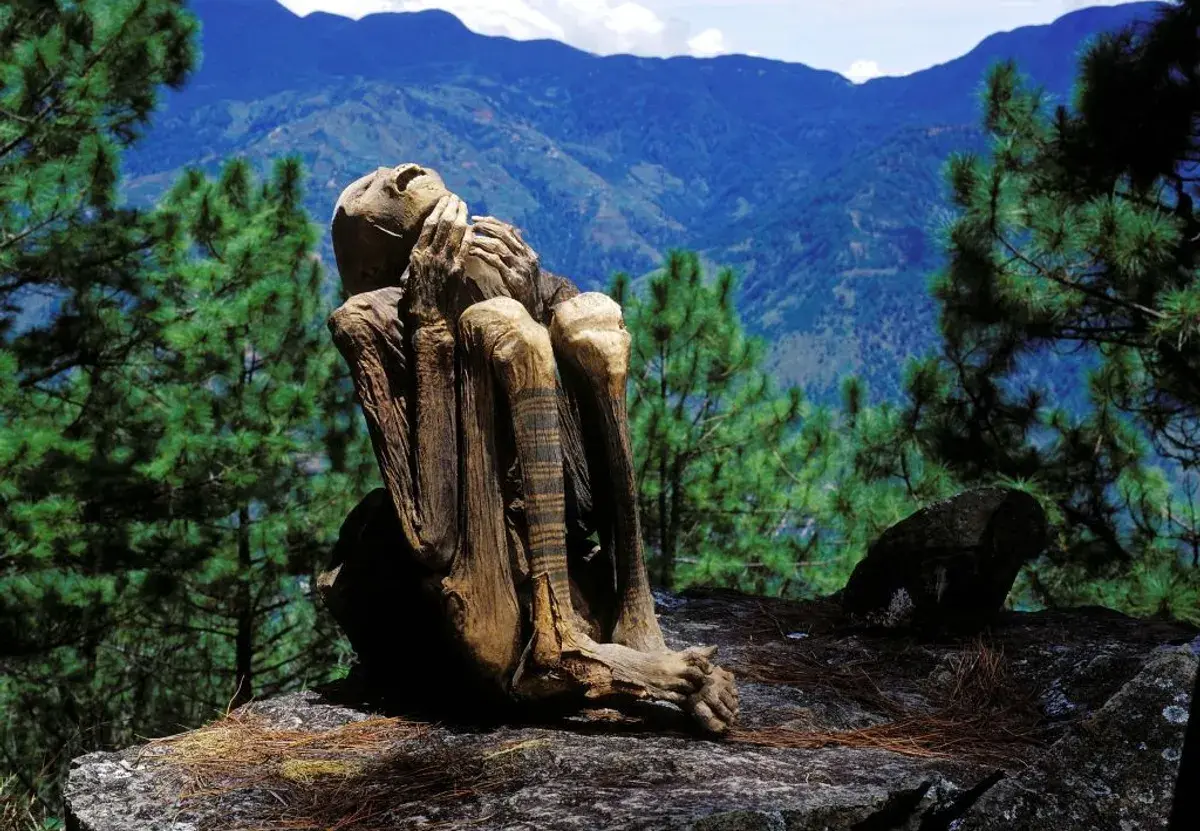Dozens of secretly hidden “fire mummies” found in the mountainous Kabayan municipality of the Philippines have lain undisturbed for hundreds of years. Known locally as Meking, these well-preserved corpses belong to the ancient ancestors of the indigenous Ibaloi people, but now environmental change threatens to destroy these revered remains.
The popular term “fire mummy” comes from the process of preservation of these corpses. Although the exact method of mummification was never recorded and is now largely forgotten, it is believed that mummification was smoked for a long period of time, resulting in an extraordinary state of preservation.
The mummified bodies were then placed in caves atop the highest mountains in the Benguet region. At an altitude of approximately 3,000 meters (9,840 ft), cold mountain conditions helped preserve the corpses from decomposition and decay; but climate change, leaks, and human intervention have caused some of these mummies to become infested with mold and insects.
To protect the structure, researchers from the University of Melbourne installed environmental monitors in some of the caves where these ancient mummies were hidden. This will allow scientists to monitor changes in humidity and temperature before deciding on the best way to preserve the mummies.
While the team hopes to preserve the future of fire mummies, other researchers are still trying to piece together the history of these eerie remains. Since the secrets of the Kabayan mummification process were passed on from word of mouth, the end of the tradition means the loss of many details.
For example, no one knows exactly how many mummies there are or where their caves are located. Although local legend states that the first person to become a fire mummy was Apu Anno, a 12th-century ruler and demigod, it is unclear how and when the tradition began.
Like many fire mummies, Apu Anno’s body was so perfectly preserved that the tattoos on his body are still visible. Stolen from its resting place in 1918, the legendary leader’s mummy was later displayed at a Manila carnival, then taken to an antique shop and finally returned to Ibaloa in 1999.
Unfortunately, Apu Anno’s mummified body is now riddled with fungal spores and lies in a cave off-limits to the public while scientists attempt to preserve the body.
Researchers have yet to determine the exact date of Apu Anno’s remains, but radiocarbon dating of other fire mummies has shown some to be between 150 and 200 years old. This shows that Kabayan mummification was done until the 19th century.
The procedure itself is also largely unknown, but it is believed that the bodies were strapped to a device called a “death chair”, cleaned with salt water, and dried with smoke from burning plants. No one knows for sure which plants were used, although interviews with local indigenous elders revealed that many ingredients, including a local plant called Embelia philippinensis, were specifically chosen for their antimicrobial properties.
According to local beliefs, Mekings were placed on the tops of mountains to be closer to the gods. Some believe that current and future generations of Ibaloi will be doomed if their extinction is not prevented.













